The cultivation of leguminous plants has proved to significantly improve soil life and structure when growing cannabis plants. This quality organic fertilizer, also known as “green manure”, uses airborne nitrogen to keep the soil healthy and rich in nutrients.
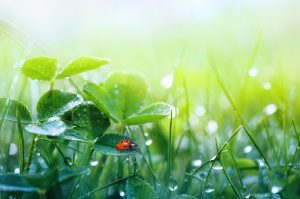
How can leguminous plants help your cannabis grow?
Nitrogen-rich soil
The plants that belong to the family Fabaceae (Leguminosae) have some symbiotic nitrogen-fixing bacteria called Rhizobium inside their root nodules that supply nitrogen to the plant and in return receive carbon. Atmospheric nitrogen (N2) is reduced to ammonium ions (NH4+) by these bacteria for later use by the roots. Surrounding plants also benefit from soil nitrogen accumulation, which is one great plus.
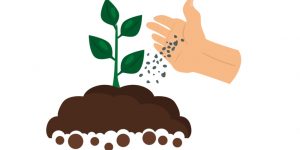
There are two ways in which we can use these bacteria to our advantage: we can either grow legumes and cannabis simultaneously or sow marijuana plants once leguminous plants have broken down and released all the nitrogen inside their cell bodies. We can, therefore, conclude that legumes help fix airborne nitrogen to the soil. They're the only plants capable of carrying out this process in a natural way – hence their name "green manure".
Improved soil structure
Another major advantage of our growing leguminous plants near our cannabis grow is their ability to improve soil life and structure.
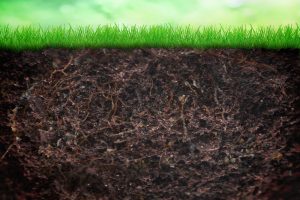
Fabaceae have a strong root system that can go deep down into the soil, in some cases even 6-10 ft. like alfalfa. As a consequence of the lack of compactness, soil aeration is enhanced and so water and nutrients can move freely all over the substrate. Besides, we won't have to worry about their being too close because the roots of the legumes grow at greater depth, meaning our cannabis plants will stretch without barriers. The use of leguminous plants is complementary, but still highly beneficial for all the plants of our grow space.
8 leguminous plants to help our plants grow
These 8 legumes are to be grown in the same substrate as the plant, as close as possible to them. All of them have nitrogen-fixing bacteria that improve soil life and structure and consequently benefit our plants.
-
- White clover (Trifolium repens), also known as Dutch clover, is a perennial plant, with whitish flowers, growing no more than 4 inches high and evenly covering the whole area. It is commonly grown in grassy areas where cows graze since it's proved to significantly boost the production of milk. Noted for its ability to fix nitrogen, it is very popular among bumblebees and honey bees.
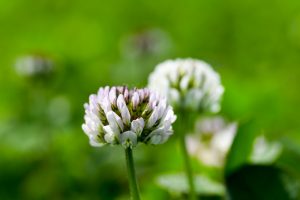
-
- Cow vetch (Vicia cracca) is a herbaceous plant with climbing stems that could grow up to 5 ft. Between June and September, its stems produce quite a lot of blueish and purplish spike-looking flowers. This species can also improve soil structure thanks to its nitrogen-fixing properties. That's why it's so commonly used in permaculture. There's another species of vetch, Vicia sativa, offering the same advantages plus an additional input of beneficial organic matter.
- Alfalfa (Medicago sativa) is a perennial plant growing between 12 and 31 inches high. Between July and September, it produces nectar-filled flowers that honeybees love. Most alfalfa cultivars have purple, pompom-looking flowers but there are others, like M. falcata, that are yellow instead. Alfalfa arborea (Medicago arborea) is also a great choice. This plant species is particularly resistant to draughts. Its deep-diving roots enhance soil aeration and help fix nitrogen to the soil.
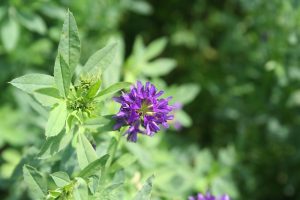
-
- Phacelia (Phacelia tanacetifolia/ family Hydrophylloideae): this nectar-rich plant is a natural herbicide that quickly eliminates weeds, as a result of its fast growth.
- White mustard (Sinapsis alba) of the family Brassicaceae: it grows so quickly that surrounding weeds don't even have time to pop their heads out. It effectively eliminates any disturbing elements plus it's really cheap. But not only that. Apart from repelling the nematodes and fungi attacking the root system, this amazing leguminous plant, whose nectar-filled flowers honeybees love, successfully takes up nitrogen and puts up with cold and even frosty climates. And, to top it off, it's super-easy to grow.
- Blue lupin (Lupinus angustifolius) is a highly effective nitrogen-fixing leguminous plant. Its beneficial properties capable of improving the structure of low-nutrient soils make it perfect for planting on exhausted fields. From July to September, it produces blue inflorescences.
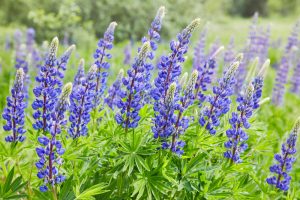
- Bird's foot trefoil (Lotus corniculatus): this melliferous plant with yellow flowers makes a perfect multi-annual green manure. As well as drought-resistant and cold-resistant, it thrives in calcareous soils, improving its aeration and effectively fixing nitrogen to it. In short, an extraordinary plant that will greatly benefit your organic marijuana grow.
- Crimson clover (Trifolium incarnatum): this leguminous plant with blood-red flowers is as beautiful as it is effective. Apart from its nitrogen-fixing properties, it improves soil aeration. With a fast growth that prevents the development of weeds in the area where it's planted, this honeybee plant easily adapts to all kinds of soils.
Nature knows best! We hope these leguminous plants help you make the most out of your organic cannabis grow. HSO Team





this are some great tips good for this year outdoor grow thks